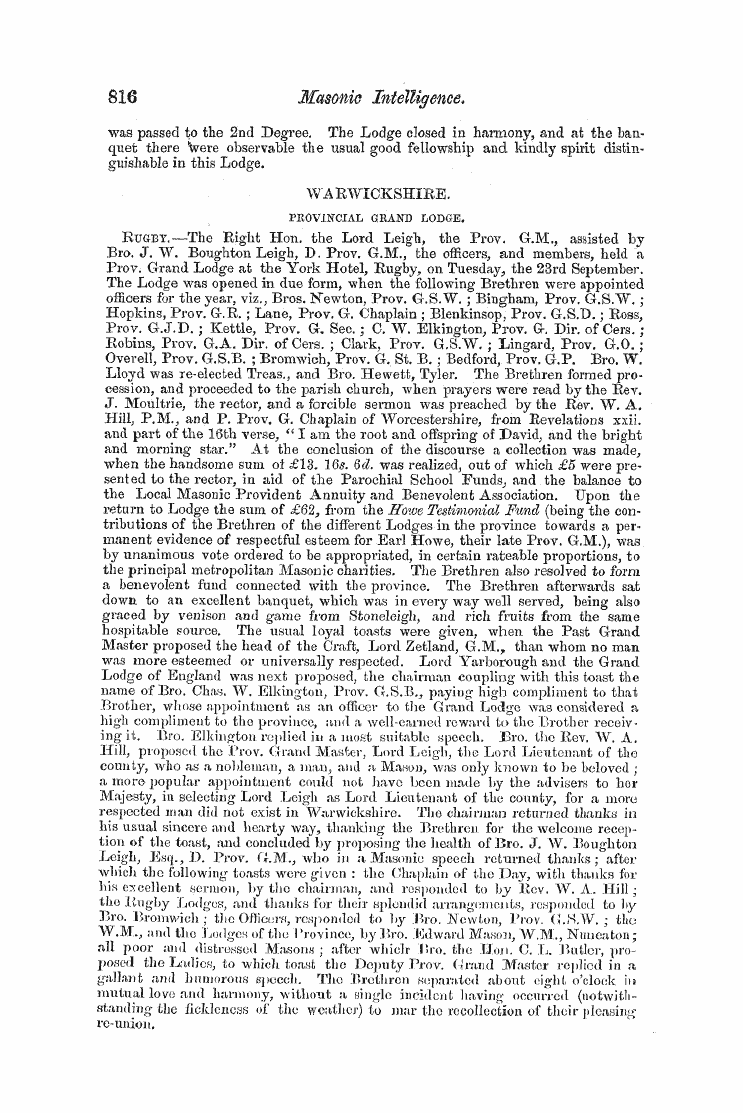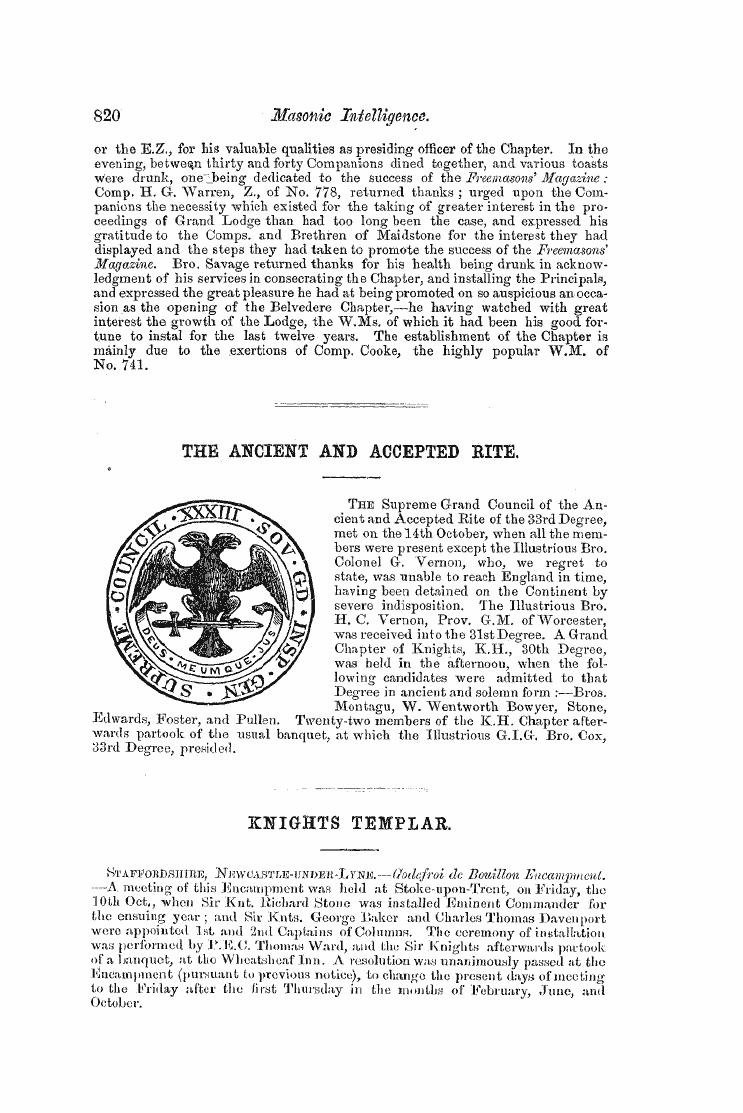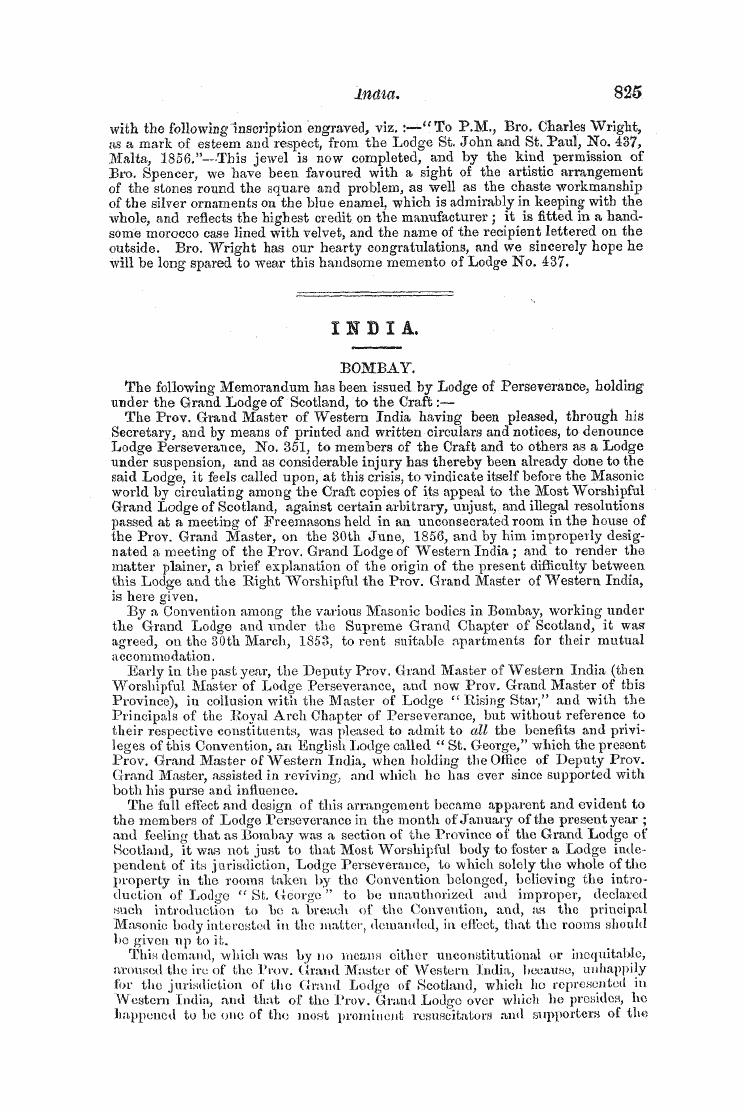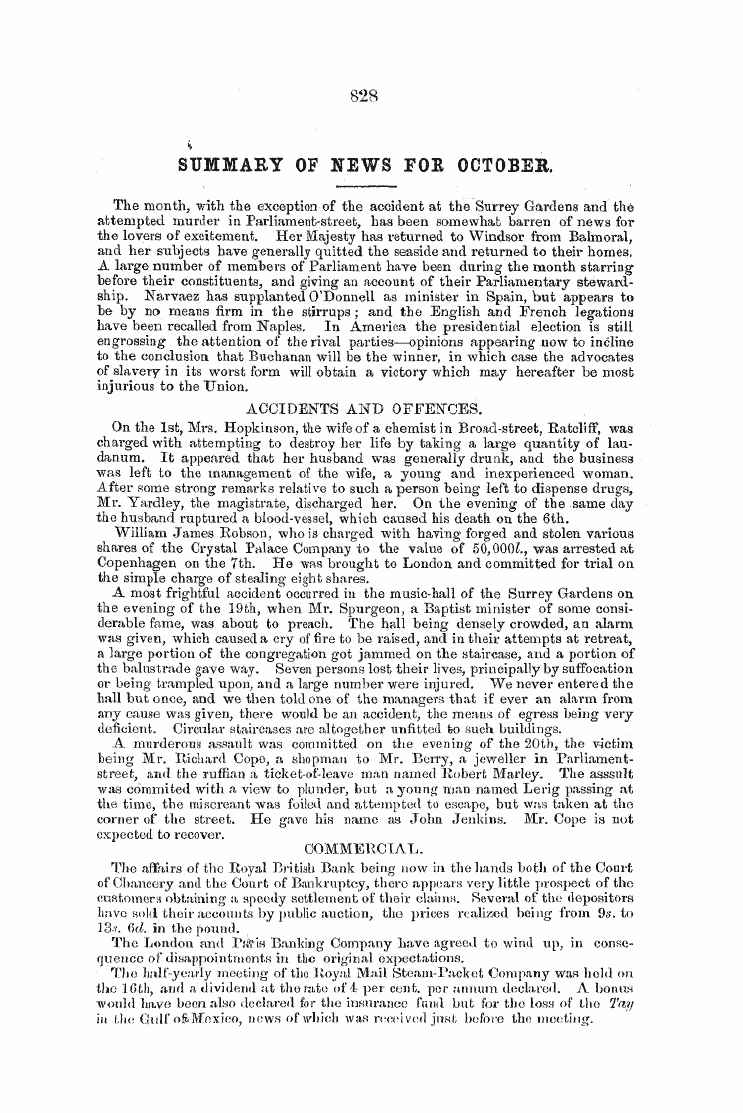-
Articles/Ads
Article « THINGS NOT GENEBALLY KNOWN."* ← Page 4 of 6 →
Note: This text has been automatically extracted via Optical Character Recognition (OCR) software.
« Things Not Genebally Known."*
We quote two popular superstitions : — " WITCHCRAFT IN BKEWING . " In a Scotch brewer ' s instructions for Scotch ale , dated 1793 , we find this mystical note : ' I throw a little dry malt , which is left on purpose , on the top of the mash , with a handful of salt , to keep the witches from it , and then cover it '"up . ' Perhaps this practice gave rise to indifferent beer being termed waterbewitched .
* ' LUCK OF HORSE-SHOES . " Butler , in Budibras , says of his conjuror , that he could—* Chase evil spirits away by dint Of sickle , horse-shoe , hollow flint . ' " Aubrey , in his Miscellanies , tells us that , —
" 'It is a thing very common to nail horse-shoes on the thresholds of doors ; which is to hinder the power of witches that enter the house . Most of the houses of the west-end of London have the horse-shoe on the threshold . It should be a horse-shoe that one finds . ' He adds , Under the porch of Stanfield Church , in Suffolk , I saw a tile , with a horse-shoe upon it , placed there for this purpose , that one would imagine that holy water alone would have been sufficient . I am told there are many more instances . ' "
"In Gay ' s fable of 'The Old Woman and her Cats / the supposed witch complains : — ' Straws laid across my path retard . The horse-shoe ' s naiVd , each threshold ' s guard . " In Monmouth-street , probably one of the localities alluded to by Aubrey ( then a fashionable neighbourhood ) , many horse-shoes , nailed to the thresholds , were to be seen in 1797 ; in 1813 , Sir Henry Ellis counted seventeen horse-shoes in Monmouth-street , in 1852 only eleven remained .
" It was once thought lucky to find old iron , but more especially a horse-shoe . This notion has been current in our time , as well as the nailing of the shoes in front of the sill and over the doorway , in Sussex ; where , in childhood , we have more than once accounted ourselves lucky in finding a horse-shoe . " "N elson was of a superstitious turn , had great faith in the luck of a horse-shoe , and one was nailed to the mast of the ship Victory . c Lucky Dr . James' attributed the success of his fever-powder to his finding a horse-shoe .
" When Dr . James , then a poor apothecary , had invented the fever-powder , he was introduced to N " ewbery , of St . Paul ' s Churchyard , to vend the medicine for him . * One Sunday morning , as James was on his way to ISTewbery ' s countryhouse at "V auxhall , in passing over Westminster-bridge , seeing a horse-shoe lying in the road , and considering it to he a sign of good luck , he carefully put the shoe into bis pocket . As Newbery w * as a shrewd man . he became James ' s agent for sale of the fever-powder ; whilst the doctor ascribed all his success to the horseshoe , which he subsequently adopted as the crest upon his carriage . '
" The magpie is a bird of omen , and is associated with the lucky horse-shoe in the well-known public-house sign . " The superstition , of the ill-luck of " thirteen to dinner" is thus exploded : — " If the probability be required that out of thirteen persons , of different ages ,
one of them , at least , shall die within a year , it will be found that the chances are about one to one that one death , at least , will occur . " This superstition obtains in Italy and Eussia , as well as in England . Moore , in his ' Diary / vol . ii . p . 206 , mentions there being thirteen at dinner one day at Madame Catalani ' s , when a French countess , who lived with her upstairs , wna
sent for to remedy the grievance . Again , Lord L . said he had dined once abroad at Count OrlofF's , who did not sit down to dinner , but kept walking from chair to chair , because < the Naristiken were at table , who , he knew , would rise VOIu II . 5 C
Note: This text has been automatically extracted via Optical Character Recognition (OCR) software.
« Things Not Genebally Known."*
We quote two popular superstitions : — " WITCHCRAFT IN BKEWING . " In a Scotch brewer ' s instructions for Scotch ale , dated 1793 , we find this mystical note : ' I throw a little dry malt , which is left on purpose , on the top of the mash , with a handful of salt , to keep the witches from it , and then cover it '"up . ' Perhaps this practice gave rise to indifferent beer being termed waterbewitched .
* ' LUCK OF HORSE-SHOES . " Butler , in Budibras , says of his conjuror , that he could—* Chase evil spirits away by dint Of sickle , horse-shoe , hollow flint . ' " Aubrey , in his Miscellanies , tells us that , —
" 'It is a thing very common to nail horse-shoes on the thresholds of doors ; which is to hinder the power of witches that enter the house . Most of the houses of the west-end of London have the horse-shoe on the threshold . It should be a horse-shoe that one finds . ' He adds , Under the porch of Stanfield Church , in Suffolk , I saw a tile , with a horse-shoe upon it , placed there for this purpose , that one would imagine that holy water alone would have been sufficient . I am told there are many more instances . ' "
"In Gay ' s fable of 'The Old Woman and her Cats / the supposed witch complains : — ' Straws laid across my path retard . The horse-shoe ' s naiVd , each threshold ' s guard . " In Monmouth-street , probably one of the localities alluded to by Aubrey ( then a fashionable neighbourhood ) , many horse-shoes , nailed to the thresholds , were to be seen in 1797 ; in 1813 , Sir Henry Ellis counted seventeen horse-shoes in Monmouth-street , in 1852 only eleven remained .
" It was once thought lucky to find old iron , but more especially a horse-shoe . This notion has been current in our time , as well as the nailing of the shoes in front of the sill and over the doorway , in Sussex ; where , in childhood , we have more than once accounted ourselves lucky in finding a horse-shoe . " "N elson was of a superstitious turn , had great faith in the luck of a horse-shoe , and one was nailed to the mast of the ship Victory . c Lucky Dr . James' attributed the success of his fever-powder to his finding a horse-shoe .
" When Dr . James , then a poor apothecary , had invented the fever-powder , he was introduced to N " ewbery , of St . Paul ' s Churchyard , to vend the medicine for him . * One Sunday morning , as James was on his way to ISTewbery ' s countryhouse at "V auxhall , in passing over Westminster-bridge , seeing a horse-shoe lying in the road , and considering it to he a sign of good luck , he carefully put the shoe into bis pocket . As Newbery w * as a shrewd man . he became James ' s agent for sale of the fever-powder ; whilst the doctor ascribed all his success to the horseshoe , which he subsequently adopted as the crest upon his carriage . '
" The magpie is a bird of omen , and is associated with the lucky horse-shoe in the well-known public-house sign . " The superstition , of the ill-luck of " thirteen to dinner" is thus exploded : — " If the probability be required that out of thirteen persons , of different ages ,
one of them , at least , shall die within a year , it will be found that the chances are about one to one that one death , at least , will occur . " This superstition obtains in Italy and Eussia , as well as in England . Moore , in his ' Diary / vol . ii . p . 206 , mentions there being thirteen at dinner one day at Madame Catalani ' s , when a French countess , who lived with her upstairs , wna
sent for to remedy the grievance . Again , Lord L . said he had dined once abroad at Count OrlofF's , who did not sit down to dinner , but kept walking from chair to chair , because < the Naristiken were at table , who , he knew , would rise VOIu II . 5 C



















































































